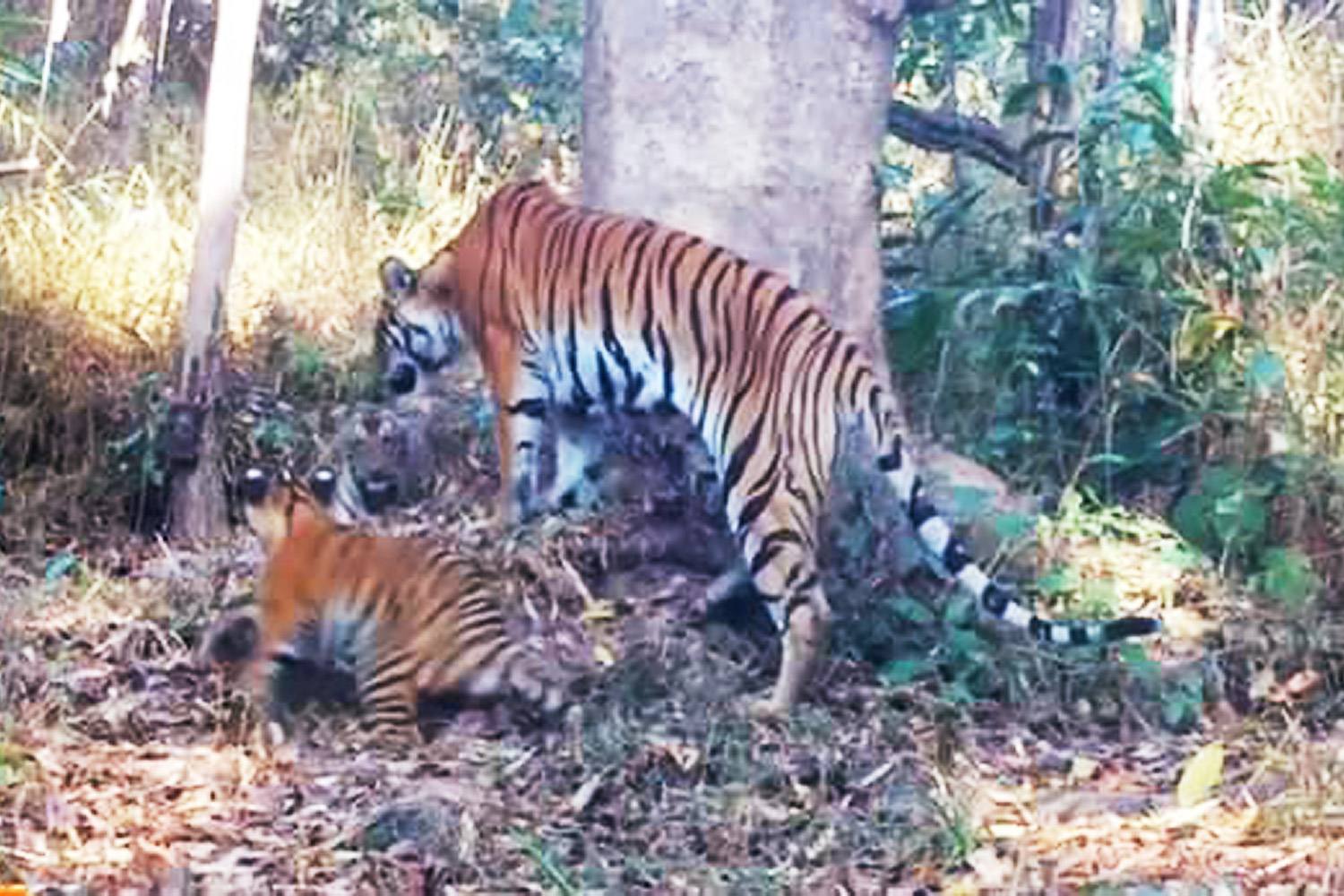
Camera traps installed deep in the forest of Mae Wong National Park have revealed rare wildlife including a mother tiger and her two cubs and bantengs thought to have disappeared from the park 40 years ago.
The cameras were installed in 94 spots throughout the forest as part of a 10-year research initiative into the rehabilitation of the wild tiger population and their prey in the Mae Wong, Klong Lan and Klong Wang Chao national parks in Kamphaeng Phet and adjacent Tak province.
The research is being undertaken in collaboration with WWF Thailand, said Neramit Songsaeng, chief of the Mae Wong National Park.
The camera traps yielded startling pictures of rare animals, including 14 tigers, eight of them female, as well as 35 other wildlife species, such as elephants, bantengs, sambar deer, wild boars and Indian muntjacs, which are on the International Union for Conservation of Nature (IUCN) Red List of threatened animals, he said.
Mr Neramit said the cameras showed there is now one tiger per 100 square kilometres of the parks, signalling a growing population.
On March 2, a team of researchers went into the forest to collect memory cards from the camera traps which had captured rare footage of a mother tiger being tagged along by two cubs.
Bantengs, thought absent from Mae Wong National Park for the past 40 years, were also recorded.
The video serves as evidence of the bantengs' return to the habitat and the pristine condition and biodiversity of the forests.
Mr Neramit said the research would prove useful in enabling the release back into the wild of further, previously at-risk wildlife species.
The study also explores ways to prevent crimes against wildlife with the help of volunteers and workers who take part in managing forest conservation.
The national parks are able to use the data and research to conduct more efficient forest patrols and use the right tools and equipment in such operations, he said.